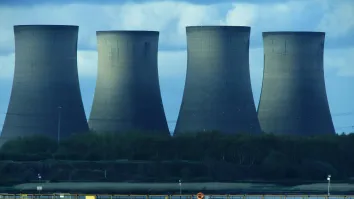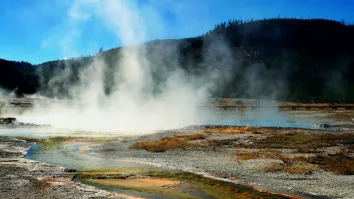Data monitoring practices key to emerging Taiwanese offshore opportunities
By Chris Huxley-ReynardAs industry focus shifts to guaranteeing Taiwan’s renewable energy targets, vessel operators must adopt advanced vessel monitoring practices to secure lucrative support contracts.
Thanks to a recent boost in investment and policy support, it seems like the only way is up for offshore wind in Taiwan. Ten offshore projects totalling 3GW are set to come online in the next 5 years, and Taiwan’s bureau of energy has just announced plans for a further 10GW of capacity to be commissioned between 2026 and 2035. Supported by the recent re-election of pro-offshore wind Tsai Ing-wen as president, prospects for the sector look particularly strong, with the country on course to meet its target for at least 20% of the country’s electricity generation to come from renewables by 2025.
However, fundamental to meeting the country’s renewable generation target is guaranteeing the long-term availability and generating capabilities of each wind asset. Driving this success will be high-quality offshore support – something which represents a massive commercial opportunity for local vessel operators and international firms looking to replicate their successes in the emerging Taiwanese sector.
Vessel operators keen to secure a foothold in the region must understand that many of the offshore project owners establishing themselves in Taiwan will have cut their teeth in the mature European sector and will be coming to this emerging market with well-defined expectations for what quality support vessel operations look like. This includes high levels of vessel availability, fuel efficiency, and crew and technician health and safety.
Key to achieving the highest possible safety standards and establishing intelligent, efficient operations that will drive commercial success in the region is advanced data monitoring across the fleet. The decision to collect vessel data and act on the operational insights this generates – not to mention choosing to share this information with project owners – is having an increasingly tangible impact on procurement decisions. Many major charterers are now mandating for advanced systems to be installed on the ships working on their projects as they look to establish long term relationships with trusted operators.
Advanced remote monitoring involves automatically recording health and performance data from each vessel’s critical equipment, observing fuel burn, speed, and vessel motion, as well as tracking navigation and impact (or push-on) against the turbine. Recording this data and broadcasting it to the team on shore has multiple operational advantages that translate to demonstrable value for clients:
Maximize vessel availability – By recording and reporting on the health of critical equipment in real-time through an advanced remote monitoring system, it is possible to group maintenance and other actions that require the vessel to be taken out of service into a single period of scheduled downtime.
By acting on faults and damage whilst they are minor – and during periods of planned maintenance – it is possible to increase the overall lifetime of each ship and its constituent parts. This not only reduces overall costs for the operator, but it also maximises vessel availability for clients, as faults or performance issues are dealt with before they impact project operation.
Cut fuel burn and costs – Advanced remote monitoring systems support operators in understanding when and why excess fuel is being used on their ships, and highlights how they can reduce fuel consumption across fleet operations.
Excess fuel use can be due to a number of reasons – none of which are easy to immediately identify and rectify without a complete, data-based understanding of each vessel. An increase in fuel burn can be the result of marine fouling, poor engine health, faults in critical equipment, gaps in crew training, and even damage to the propellers or hull.
By channelling data collected from existing sensors across the vessel through a single portal, operators can identify the issues driving fuel burn early on, understand the root cause, and solve the issue – resulting in more sustainable, fuel – and cost-efficient operations.
Guarantee fitness to work – The comprehensive monitoring of data sourced from across each vessel has important implications for health and safety, by supporting vessel operators in ensuring technicians arrive at the project healthy and fit to work. This is particularly salient for offshore wind farms located in the Taiwanese Strait. Whilst the area’s high wind speeds mean the region’s wind farms are optimally placed for energy generation, weather conditions can be severe and changeable with a significant risk of tropical storms and monsoons.
The effective monitoring of critical equipment, vessel motion, weather and sea conditions is essential for ensuring successful personnel transfers and reducing sickness in these conditions. The insights gained from monitoring turbine transfer stability, ride comfort, speed and navigation empowers crews to make better-informed decisions when getting technicians to the projects which need them. This, in turn, influences productive “time on turbine” for technicians, and supports project owners in guaranteeing that each turbine is generating at its best.
Conclusion
Offshore wind project construction and capacity is set to ramp up in Taiwan across the next five years and shows few signs of slowing. As such, it will prove crucial for local and international vessel operators looking to establish long-term, productive commercial relationships with project owners in this emerging market to act on the expectations and standards established in the mature European market.
Vessel operators who invest in generating an in-depth, data-based understanding of each vessel across their fleet through advanced remote monitoring will find themselves at a real commercial advantage, as they are able to prove to project owners how they can support them in achieving both renewable energy targets and investor goals.




















 Advertise
Advertise







